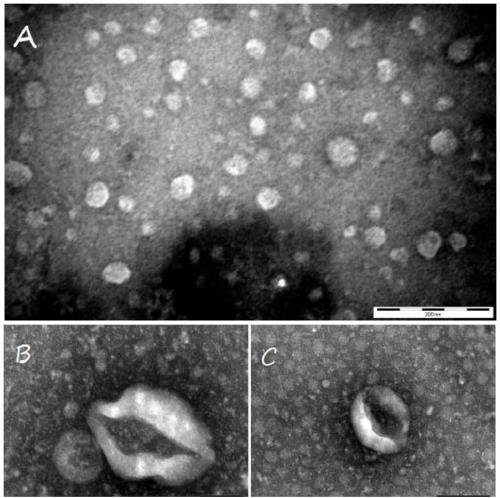Method for separating exosomes by low-speed ultrafiltration centrifugation conjugated polymer precipitation technique
A technology combining polymers and exosomes, applied in the field of biomedicine, can solve the problems of large amount of reagents used, inability to purchase polymer precipitation method kits in large quantities, high price, etc., achieving simple and easy operation methods and overcoming background impurities. The effect of interference and reducing the cost of reagent use
- Summary
- Abstract
- Description
- Claims
- Application Information
AI Technical Summary
Problems solved by technology
Method used
Image
Examples
Embodiment 1
[0042] Example 1 Extraction and purification of nerve cell exosomes
[0043]1. Extract primary neurons (including cortical neurons and hippocampal neurons) from newborn mice: use ethanol to sterilize the head of newborn mice within 24 hours (balb / c mice were purchased from Guangzhou University of Traditional Chinese Medicine), cryoanesthetize, and place in The cortex and hippocampus were separated by PBS phosphate buffered saline at 4°C, and the meninges and blood vessels were removed. After resting for 2 minutes, the supernatant was discarded, 0.125% trypsin (Gibico Company) was added to the tissue, the digestion was terminated after 10 minutes of digestion, the cells were resuspended, and the supernatant was discarded after centrifugation at 1000 r / min for 5 minutes, and plated. The complete medium DMEM / F12 (purchased from Gibico Company) was used to promote neuron maturation, and the serum-free medium containing nerve cell growth factor (Neurobasal+2% B27 medium from Gibico...
Embodiment 2
[0051] Example 2 Identification of exosomes
[0052] 1. Morphological observation
[0053] The morphology of the exosomes obtained in Example 1 was observed by a transmission electron microscope.
[0054] (1) After fully mixing the exosomes obtained in Example 1 with PBS;
[0055] (2) Add 20 μL to the sample-loading copper grid with a diameter of 2 mm, and let it stand for 5 minutes;
[0056] (3) Use filter paper to gently blot the liquid around the copper mesh, then place the copper mesh upside down on a 20g / L phosphotungstic acid (pH6.8) drop, and negatively stain at room temperature for 10 minutes;
[0057] (4) The copper grid was dried under an incandescent lamp, and placed under a transmission electron microscope to find a vesicle-like structure with a diameter of 40-100 nm and take pictures. The results are as follows: figure 1 As shown, the scale of A is 200nm, B and C are enlarged compared with A, and the scales are 50nm and 100nm respectively.
[0058] 2. Labeled ...
Embodiment 3
[0075] Example 3 Study on particle diameter and concentration of exosomes
[0076] The nanoparticle tracer technology further identifies exosomes, and the concentration and particle diameter of exosomes are obtained by analysis, detection and purification. Nanosight visual nanoparticle analyzer can directly and dynamically observe the state of Brownian motion of nanoscale particles in the sample, and use the Stroke-Einstein equation to directly obtain the particle size of each particle, and can measure the true concentration of particles (units / ml). The result is as image 3 As shown, the concentration, size and other characteristics of the product obtained in the present invention are in line with the expression of exosomes.
PUM
| Property | Measurement | Unit |
|---|---|---|
| diameter | aaaaa | aaaaa |
Abstract
Description
Claims
Application Information
 Login to View More
Login to View More - R&D
- Intellectual Property
- Life Sciences
- Materials
- Tech Scout
- Unparalleled Data Quality
- Higher Quality Content
- 60% Fewer Hallucinations
Browse by: Latest US Patents, China's latest patents, Technical Efficacy Thesaurus, Application Domain, Technology Topic, Popular Technical Reports.
© 2025 PatSnap. All rights reserved.Legal|Privacy policy|Modern Slavery Act Transparency Statement|Sitemap|About US| Contact US: help@patsnap.com



